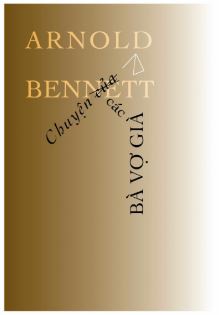What do you think?
Rate this book


645 pages, Paperback
First published January 1, 1908

"Every stout, ageing woman is not grotesque -- far from it! -- but there is an extreme pathos in the mere fact that that every stout ageing woman was once a young girl with the unique charm of youth in her form and her movements and in her mind. And the fact that the change from the young girl to the stout ageing woman is made up of an infinite number of infinitesimal changes, each unperceived by her, only intensifies the pathos. It was at (the) instant (of this observation) that I was visited by the idea of writing the book which ultimately became The Old Wives' Tale." So writes Arnold Bennett in the preface to his masterpiece of realistic fiction, a book that follows the lives of two sisters, Constance and Sophia, from simple days in mid-Victorian England through the chaos and tumult of the modern age. Along the way, a novel is built, detail by rich detail, that rivals the great realistic works of Balzac, Flaubert, Zola, and Maupassant.I don't really know what I feel after the reading this book, apart from exhausted and sad. But digging deeper into the reason behind my feelings, I can only conclude that the realities of the two sisters were nothing really different than what is happening to everyone in life.
“Scars are just another kind of memory.” ― M.L. Stedman, The Light Between OceansInstead of hiding behind social etiquette and good manners, the story, published in 1908, is told with blatant honesty, coupled with a subtle dry sense of humor and a profound knowledge of humanity. The historical aspects of events which were either unknown or peculiar, added a deeper nuance to the book. I really enjoyed it.
...an old woman came into the restaurant to
dine. She was fat, shapeless, ugly, and grotesque. She had a ridiculous voice, and ridiculous gestures. It was easy to see that she lived alone, and that in the long lapse of years she had developed the kind of peculiarity which induces guffaws among the thoughtless.
I reflected, concerning the grotesque diner: 'This woman was once
young, slim, perhaps beautiful; certainly free from these ridiculous mannerisms. Very probably she is unconscious of her singularities. Her case is a tragedy. One ought to be able to make a heartrending novel out of the history of a woman such as she.' Every stout, ageing woman is not grotesque—far from it!—but there is an extreme pathos in the mere fact that every stout ageing woman was once a young girl with the unique charm of youth in her form and movements and in her mind. And the fact that the change from the young girl to the stout ageing woman is made up of an infinite number of infinitesimal changes, each unperceived by her, only intensifies the pathos.